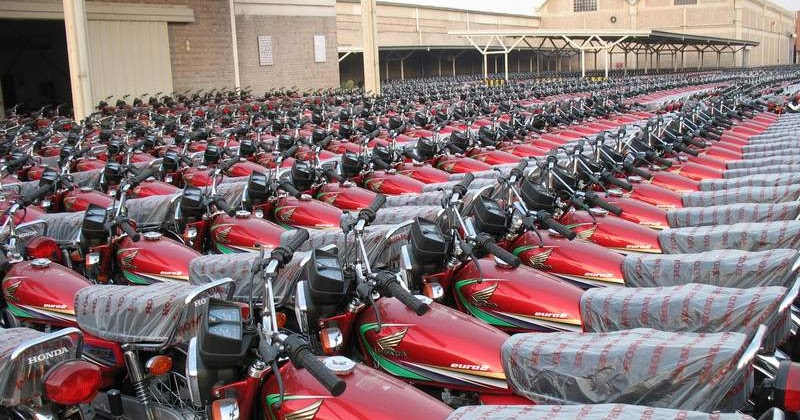Pakistan’s motorcycle industry stands at a pivotal juncture, poised to potentially unlock a new export revenue stream for the country amidst a pressing need for foreign exchange.
Industry analysts assert that the two-wheeler sector has significantly strengthened in recent years, marked by continuous enhancements in quality, introduction of new models with added features, and competitive pricing. This readiness positions Pakistan to penetrate regional markets effectively.
“By strategically targeting emerging markets and addressing critical challenges, Pakistan can establish itself as a formidable player on the global stage,” noted an industry expert.
Over the past decade, Pakistan’s motorcycle manufacturing sector has witnessed substantial growth. Local giants such as Atlas Honda, Pak Suzuki, Yamaha, and United Motorcycles have ramped up production to meet domestic demand, which now exceeds two million units annually. This expansion sets the stage for the country to explore export opportunities.
Currently, motorcycle exports remain negligible, necessitating measures to enhance brand recognition, ensure compliance with international regulations, and establish robust distribution networks. Continuous innovation and improvement in product offerings are also crucial in competing with established international brands.
Atlas Honda leads motorcycle exports, constituting only about 1% of its total production. Meanwhile, challenges persist in the domestic market, where bike sales are declining due to persistent inflation affecting purchasing power, particularly among the farming community.
During the first nine months of the 2023-24 financial year, two and three-wheeler sales totaled 1.06 million units, down nearly 4% compared to the previous year’s 1.104 million units. To counter these challenges, industry stakeholders urge government support to bolster motorcycle exports.
“India’s government support initiatives, including special rebates, have propelled their motorcycle exports to 3.458 million units in FY24, far surpassing Pakistan’s capacity,” highlighted an expert. Currently, almost half of Pakistan’s installed production capacity for two-wheelers remains idle, emphasizing the need for expanded exports.
Opportunities abound in global markets, notably in Africa (Nigeria, Kenya, Tanzania), the Middle East (Iran, Iraq), and South Asia (Bangladesh, Sri Lanka), driven by urbanization and rising middle-class demand. Experts advocate for supportive government policies such as tax incentives, subsidies, and reduced business costs to spur manufacturing and facilitate exports.
Initiatives like the “Look Africa” policy could further enhance trade relations with African nations, offering promising avenues for Pakistani motorcycles in these burgeoning markets.
